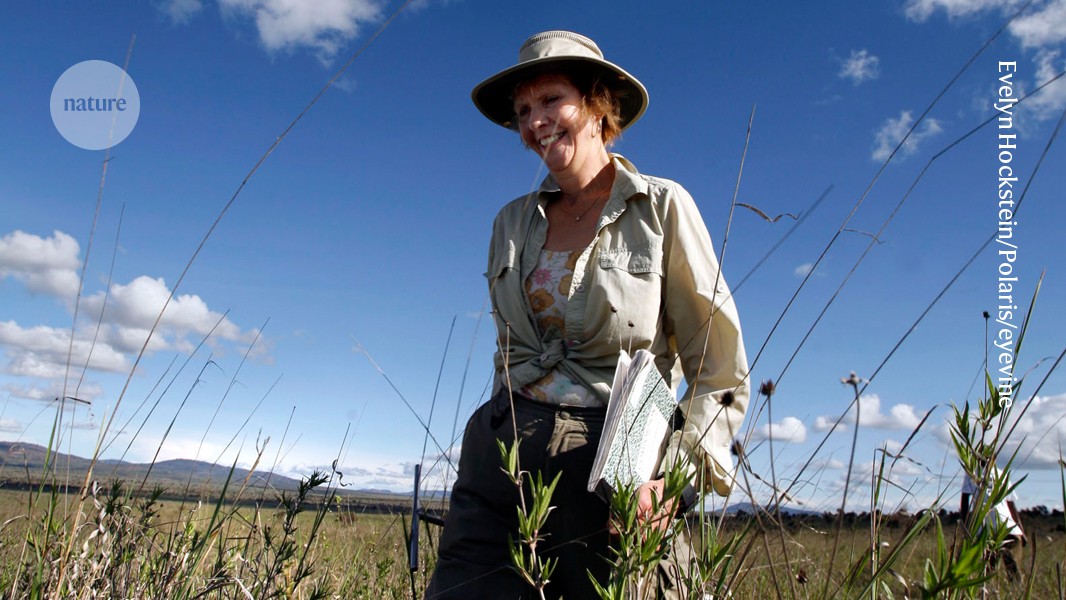Diana Wall obituary: ecologist who foresaw the importance of soil biodiversity

Environmental scientist who revealed the crucial role of underground animals in sustainability

Credit: Evelyn Hockstein/Polaris/eyevine
Diana Wall was a true ecology and climate pioneer. Biodiversity in soil is often overlooked — a case of out of sight, out of mind — but Wall understood its importance for a sustainable future. The soil is home to more than half of all species, which are crucial for Earth’s terrestrial ecosystems. Wall spent her entire career exploring how soil-dwelling organisms regulate carbon and nutrient cycling, and how they respond to climate change. She focused on a little-studied but ubiquitous group of soil organisms — nematodes (roundworms) — across ecosystems. She also unflaggingly championed the importance of soil biodiversity for society. She has died aged 80.
From 2011, as founding chair of the Global Soil Biodiversity Initiative, Wall brought together soil ecologists to inform policy, education and the public. She was at her best when she travelled around the world for research, to connect with soil ecologists — including many from marginalized communities — and to advocate for soil biodiversity to be at the heart of sustainability discussions. She also orchestrated the 2016 Global Soil Biodiversity Atlas, which mapped the organisms that live under our feet and the threats they face.
Born in Durham, North Carolina, Wall first became interested in nematodes during her undergraduate studies at the University of Kentucky in Lexington. There, she launched her career in soil ecology by investigating nematodes that fed on the roots of red clover (Trifolium pratense), earning a PhD in 1971. As a postdoc in the Department of Nematology at the University of California, Riverside, Wall focused initially on nematode communities in North American desert soils. During the late 1980s, she became interested in the unexplored soil biodiversity of the McMurdo Dry Valleys in Antarctica — one of the coldest, driest regions on Earth, and a place at the environmental limits of what underground life can tolerate.
She spent more than 25 consecutive years visiting the valleys, investigating the survival and functioning of soil organisms as well as their response to climate change. Only a handful of animals live in these dry, cold soils. Wall and her colleagues discovered that — by feeding on its microbial prey — one nematode species, Scottnema lindsayae, was crucial for the carbon cycle there. The team also showed that climate change has caused big shifts in Antarctic soil food webs over time. The decreasing abundance of S. lindsayae and increasing prevalence of other animal species has had large knock-on effects on the turnover of soil carbon, revealing that this often-ignored but crucial component of biodiversity can have widespread impacts on the region’s ecosystem.
In 1993, Wall moved to Colorado State University in Fort Collins, where she remained for the rest of her career. She had a huge influence on students and colleagues alike, through her science and her leadership roles. She was the director of the university’s Natural Resource Ecology Laboratory until 2005, and the inaugural director of its School of Global Environmental Sustainability — a post she held from 2008 until her death.
Although Antarctic soil ecology remained Wall’s passion throughout her career, her scientific contributions didn’t end there: they encompassed the world. Wall had a remarkable gift for bringing people together to tackle scientific questions that could not be addressed in any other way. For example, she recruited an international team to conduct a global-scale decomposition experiment, which showed that the role of soil animals in regulating the decomposition of biological matter — a key process in the global carbon cycle — varies between ecosystems and depends on the region’s climate. Together with researchers worldwide, she also investigated the distribution of soil animals across biomes and found that high above-ground plant diversity doesn’t always coincide with high below-ground animal diversity at a global level.
Wall also regularly convened, or joined, global groups of soil ecologists to synthesize a growing body of knowledge on the importance of underground biodiversity for ecosystems and society — for instance, through its role in regulating food production, suppressing soil-borne pathogens and providing clean air and water. This led to influential articles on sustaining soil biodiversity for ecosystem services and the need for global monitoring and conservation of soil-dwelling organisms. She spearheaded what is now a vibrant, inclusive community, promoting and communicating soil biodiversity research on a global stage. Wall received many honours for her contributions to the field, including the Tyler Prize — an award sometimes considered equivalent to a Nobel for environmental scientists. Her national and international leadership roles included the presidencies of the American Institute of Biological Sciences and the Ecological Society of America.
I first met Diana at a conference she had organized in Colorado in 1995. I was an early-career scientist, starting out on my own journey into soil ecology. It was clear then that she was special. I was struck by her enthusiasm, openness and boundless energy — characteristics that remained constant throughout her career. Diana was also humble, often playing down her own achievements while celebrating those of others. She always cared about other scientists, and was eager to learn about their research and their lives outside work. She has supported many people in their careers or during difficult times. Rarely do people touch as many lives as Diana did. She will be sorely missed, as a colleague, friend and mentor, and the field of soil ecology is at a loss without her. She will be remembered fondly as the global ambassador for soil biodiversity.
Nature 629, 754 (2024)
doi: https://doi.org/10.1038/d41586-024-01414-9
This story originally appeared on: Nature - Author:Richard D. Bardgett















